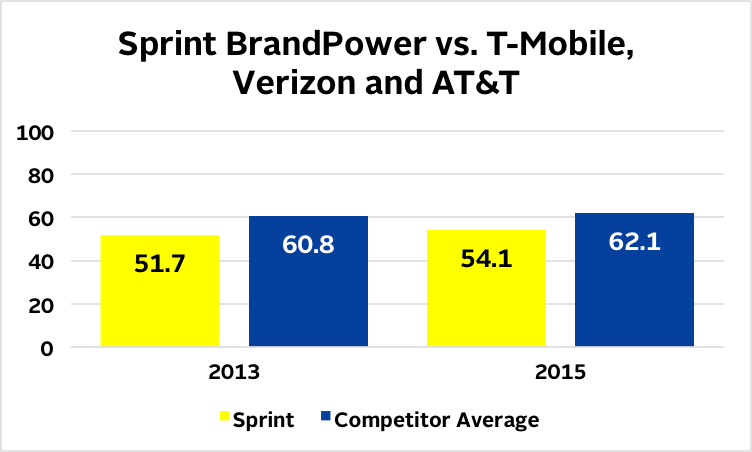I watched one of the most recent TV ads for Sprint the other day and something seemed a little off. All right, the fact that Paul, the “can you hear me now?” guy from Verizon was pitching Sprint was odd, but that’s not it. It was the message he was carrying.
He started off by saying, “Hey, it’s 2016 and every cellular network is great.” Really? If you say so…
He continues to explain that they are all so good that now Sprint’s reliability is within one percent of Verizon. Kind of indicating, “We’re about as good as we’re going to get, deal with it”. He then goes on to explain the difference in price and how Sprint is half the price of other carriers like Verizon, AT&T and T-Mobile. The commercial then hits a high note with the tagline “Don’t let a one percent difference cost you twice as much”.
That’s all well and good, but it left me thinking, “If a one percent difference isn’t a big deal, why not be one or even two percent better”. I guess at the end of the day, a giant telecom company telling me that they don’t have the best network but it’s not a big deal, kind of falls flat. Does this speak to reduced expectations across our society in general? Perhaps. Actually, I think with social media as an easy way of communicating brand performance over a broad population, expectations are higher than ever. Social media can either make or break a brand. To me, Sprint is taking a huge risk with this new messaging strategy.
So, this leads to the question of just how Sprint’s brand compares to the competitors that it names in its ad. What would lead them to use this tactic in their messaging? I examined Sprint’s BrandPower score, which is a measure of a brand’s Familiarity and Favorability (as measured by Overall Reputation, Perception of Management and Investment Potential) produced from interviews conducted by Tenet Partners. Our system measures nearly 1,000 brands across more than 50 industries and serves as a way to determine the strength and vitality of brands. BrandPower is measured on a 100-point scale and can be used as a means to compare one brand to another or a group of brands, or as a historical measure of the brand’s trend.

Sure enough, Sprint’s brand ranked the lowest across all four carriers mentioned in the ad. Given the weaker brand stature in comparison to competitors, does it really make sense for their communication to focus on them not having the most reliable network, too? I understand that they are trying to communicate a pricing message in a very complicated and crowed marketplace, but for me the message that came across was, “We’re one percent worse than the competition, and we really don’t care”.
If I worked for Sprint, I’d be very concerned as the trailing brand that the message received will be:
- We acknowledge having a less reliable network;
- It’s only one percent less reliable, which we think isn’t a big deal;
- We are not willing to go the extra mile to close the one percent reliability gap.
To me, this is an example that illustrates the importance of carefully crafting and managing your brand message. It will be interesting to watch how Sprint’s BrandPower will change over time (sneak preview, its BrandPower is down a smidge in the 1Q 2016 data). It will be interesting to examine if it will have an impact, positive or negative, and which elements of the brand will be most impacted by the messaging.
If you’d like to learn more about BrandPower and what it might look like in other industries, please look for our upcoming Top 100 Most Powerful Brands report or check out the CoreBrand Analytics section of our website.
